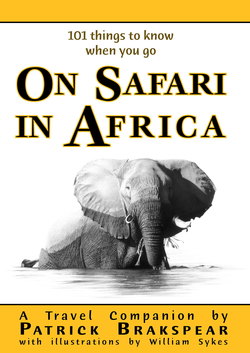Читать книгу (101 things to know when you go) ON SAFARI IN AFRICA - Patrick Brakspear - Страница 22
На сайте Литреса книга снята с продажи.
The not such good news
ОглавлениеTo be weighed against the good news is the fact that the numbers of large mammals in Africa continues to decline, with estimates of declining numbers ranging from as much as 60 to 85% since 1970, depending on species and region (with West Africa being the most affected). The list of endangered species remains long, with many species locally threatened due to ignorance and mismanagement. The threat of habitat loss and poaching of forest elephant, hippo and the primate species of West Africa is very real, and the numbers of okapi, mandrill and even the African grey parrot are extremely low.
All the great ape species, which include the chimpanzee, bonobo, orangutan and gorilla, are threatened with extinction in the wild through human encroachment into their habitats. Three of these are found only in Africa. Uncontrolled logging, together with civil unrest and land pressures, continues to put them at risk.
When European settlers first began moving into the interior of east and southern Africa in the 19th century, the savannahs teemed with rhino. They were so plentiful that it was not unusual to encounter dozens in a single day. However, due to relentless hunting by settlers, and later poaching from wildlife parks and reserves, the numbers and distribution of both the black and white rhinoceros quickly declined. Poaching pressure escalated as a result of the rising demand for rhino horn in Asia and the Middle East, and between 1970 and the mid 1990s, the rhino suffered a 95% decline in numbers. Today, only a few thousand of each species survive in the wild, although populations are slowly increasing despite a more recent, and concerted, poaching crisis as the price of horn climbs to dizzying heights on the black market.
Cheetahs, once found over much of Africa, are still endangered in most of their former range although this has recently been downgraded from critically endangered to ‘out of danger’.
The giraffe, once considered widespread and relatively common, is now at risk of extinction after suffering a devastating decline in numbers, with nearly 40% of giraffes lost in the last 30 years to habitat loss, civil unrest and illegal hunting.
The African wild dog, formerly widespread throughout sub-Saharan Africa, are today found only in a limited number of protected areas large enough to provide the large home ranges that they require. Just 3,000-5,000 are thought to remain, with most populations continuing to decline.
Habitat loss too continues unabated, with continued logging and deforestation destroying countless hectares of primary forest – the very hotbed of evolution. It is from the forests of central Africa that many of the animals that we see today, including Man, emerged and where new species are still being discovered today. Such unimaginable destruction must surely be Africa’s most crucial concern today.
Demand from China for hardwood furniture is insatiable whilst saphire mining in Madagascar is threatening the habitat of the rarest of all lemur species – the Indri.
Sub-Saharan Africa has more than 500 species listed as critically endangered, over 750 species listed as endangered, over 1500 listed as vulnerable, and over 500 near threatened. The majority of these are trees, ferns, cycads, fish, frogs, bird species and even insects. (Source: IUCN Red List of Threatened Species)
“Africa is mystic; it is wild; it is a sweltering inferno; it is a photographer’s paradise, a hunter’s Valhalla, an escapist’s Utopia. It is what you will, and it withstands all interpretations. It is the last vestige of a dead world or the cradle of a shiny new one. To a lot of people, as to myself, it is just ‘home’. It is all these things but one thing — it is never dull.” - Beryl Markham, author and adventurer.
